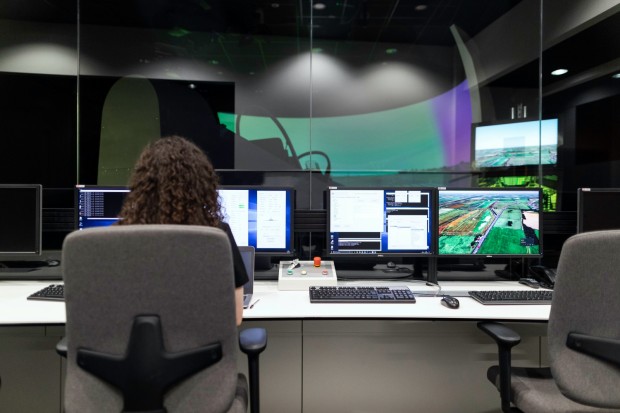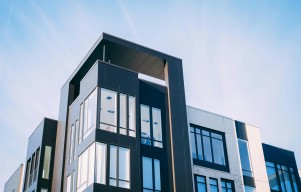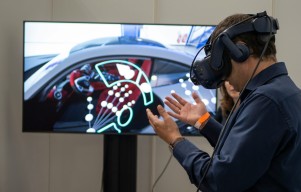
(Photo: unsplash.com/@thisisengineering)
As we try to visualize the technology concept, we immediately zoom in on the pictures of robots, supercomputers, or smartphones. This essential technology of modern wonders is manifested through everything, ranging from the fabrication of weapons, such as chipped stone tools and agricultural implements from silicon to the arrival of the steam engine that marked the birth of the First Industrial Revolution. Based upon the combination of the Greek words techne (arts, science) and logos (word, speech), technology is brought into action to meet the specific determination in a scientific and reproducible way, which might have practical purposes. People working in the construction industry, which is a large but just a part of a big picture of materials and labor, deal with different computer technologies, represented by new ways, instruments, remoteness, and software designed to improve data flow.

(Photo: Cortesia de Yvonne Witte)
Contrary to the early perception of being firmly opposed to innovation, the construction sector vividly has environmental ramifications, such as the emission of carbon and resource exploitations. Even though the physical world of Construction is gradually transforming into the digital realm, technology now works as a medium for improved efficiency and provision of tools for identifying, creating, and controlling projects. At its heart, the notion of sustainable architecture is embodied in practices such as new designs contributing to low energy consumption, more efficient utilization of renewable resources, and protection of natural habitats and the quality of the environment in which people live. Considering the environmental sustainability issues related to CO2 signatures and the insatiable appetite for housing, especially in urban communities around the globe, the adoption of technology provides a reasonable hope for solving these problems.
Sami Atiya, President of Robotics and Automation at ABB, aptly notes, "ConstrucConstructione the automotive industry was about 50 years ago in terms of the density of robots and automation. It's coming from a lower base, but it is going to grow much faster." Here, we delve into several technologies poised to revolutionize the construction landscape and propel sustainability to the forefront.
Building Information Modelling (BIM) and Enhanced Process Control
Building Information Modelling (BIM) has emerged as a cornerstone for improving design control and project management within the construction realm. This methodology digitally represents the physical and functional attributes of a building, facilitating collaboration among diverse stakeholders. Unlike traditional Computer-Aided Design (CAD) systems, which produce two-dimensional representations, BIM incorporates multifaceted properties into each element, enabling intelligent information management throughout a project's lifecycle. BIM fosters interdisciplinary collaboration and enhances project efficiency by automating processes such as programming, conceptual design, analysis, and documentation.
Also Read: Virtual Reality's Impact on Architecture and the Evolution of Design Practices
Industrialized, Modular, and Prefabricated Construction
Prefabricated construcConstructionnot a novel concept, has undergone a renaissance propelled by innovative digital tools. Leveraging BIM technology, prefabrication enables manufacturing ready or semi-ready modules in factory settings, thereby reducing construction time, errors, and waste. This approach streamlines project delivery while enhancing precision and quality control. Moreover, the open-source ethos facilitates global accessibility, allowing users to download designs and manufacture components locally, promoting sustainability and adaptability to diverse social and regional contexts.
Digital Twins in Advanced Building Methods
Digital Twin being a completely new framework based on virtual intelligent models of the real assets is a new wave to the traditional construcConstruction context of the informational models and incorporating Artificial Intelligence, they respond and amend in real-time, thereby predicting occurrences of future performance lagging and potential complications. The merging of construction-based digital twins with real-world operational data enables the modeling of processes, materials, systems, and so forth to promote efficiency of operation and energy saving. Incorporation of the LCA data in the Virtual Twin models is being employed to obtain information about the level of environmental impacts and the ensuing sustainable design decisions, which can serve as future reference while developing the product's unique design.

(Photo : © Radhika Nagpal)
3D Printing and Robotics
Automation technologies, such as 3D printing and robotics, have already become widespread use in construction, more promising than ever for the industry's future. 3D printing or additive manufacturing is a type of industrial process whereby material is mixed layer by layer by design, significantly decreasing the amount of wasted raw material. However, at the same time automation exists, some robots handle automation including automated block stacking and aerial drones that make the job efficient and safe. The technologies allow architects and contractors to expand their creative boundaries since they will enable the erection of the building structures quickly with due regard to environmental safety.
In short, even though the technology world and innovation are changing constantly, the construction field holds many opportunities for reducing limited resources and management techniques. Incorporating the new age of technologies into architectural disciplines, such as BIM, Digital Twins, and many more, will radically transform the architecture practice and en route to the intelligent city. Once the construction sector commits to the digital age, however, it becomes innovative and an inseparable component of a better natural world.
Related Article: AI Architect 'Vitruvius' Revolutionizes Home Design with Cutting-Edge Technology and Creativity


















